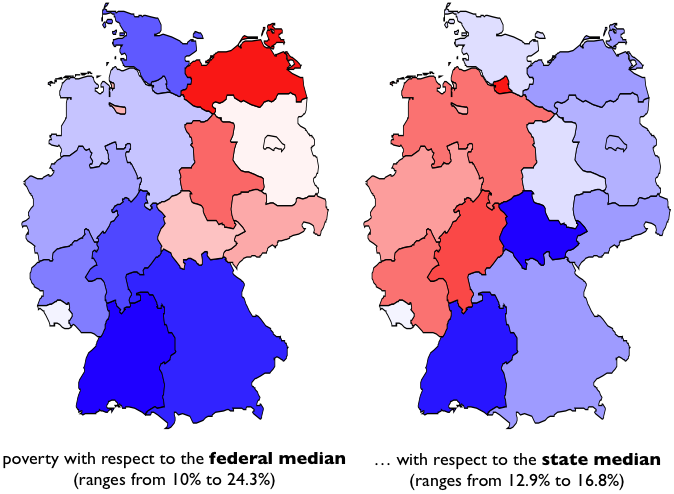Poor Germany? Poor Germany!
The definition of when someone shall be counted as being poor is usually done by some kind of statistics. The definition in Germany is when you earn less than the half of the median income. When you want to look figures to be more dramatic you also add the range where people are counted to be at risk of getting poor, which is when you earn less than 2/3 of the median income.
The trick of the game is now to decide what median income one wants to use. The easiest is to ignore local income differences; here is what you get:

The left hand map assumes an income structure and buying power that does not differ regionally, and ends up with almost a quarter of the population in the north east to live in poverty. Obviously this assumption is quite far off reality (believe me, living in Munich, I know of differences in incomes and buying power) and thus we should look at the right hand plot, which compares to the median income within the particular state. Surprisingly, the formerly poor east turned around, and now most of the western states show higher percentages of poverty. Looking at the range of the data we find that the local version shrinks down the varability of the data to only 2.3% (if we leave out the outlier of Hamburg with 16.8%), showing that all Germans are more or less equally poor – only depending on the general definition; that obviously proved to be poor!
I like to end with a (translated) quote of a German newspaper, which commented “… of course, it would be desirable for everybody to have at least the median income at their disposal, but that would not call for a new political order but for a new kind of mathematics.”
(all data are from the german statistical office)



